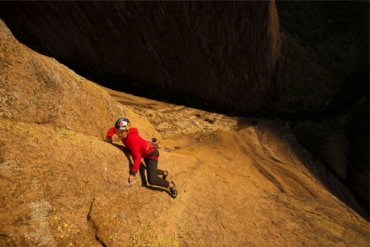Jeff Kish writes a weekly column on a laptop aboard the customized Ford Econoline in which he lives. In this entry, Kish details a solo climb gone wrong last year on Mount Hood, resulting in a rescue high on the mountain in a storm.

If you’re really into the outdoors, you constantly hunger for new and better ways to explore it, and often the best way to gain access is with the right gear. So for Thanksgiving week, I thought it might be fitting to explore my collection and see which piece I’m the most thankful for.
I dug through all my things and the choice was simple. Living in the van, it’s the last thing I use before bed each night, the first thing I use in the morning and the only piece of gear that I take with on every adventure. It also happens that one year ago my headlamp saved my life.
The sun had just begun to rise over Oregon’s eastern high deserts as I ascended past Mount Hood’s sulfurous volcanic crater and up the final chute to the summit when I turned around and realized how bad things were about to get.

To the south a wall of white came rushing toward the mountain, enveloping everything in its path. I had noted this predicted front when I started the route, but there it was hours early and coming my way.
Within minutes the storm had engulfed the mountain, and I found myself alone at 11,000 feet, in a whiteout.
I slowly descended the icy chute, blindly kicking in new steps and inching my way down into the white void until the relentless biting winds took on a rotten smell and I knew I had reached the crater. Moments later, the snow collapsed under me and I found myself hanging from my elbows and pulling my dangling feet out of a noxious black fumarole. I still had to descend 5,000’ to get to the safety of the lodge below.
In the next 5 hours, I only managed to descend 1,000 feet from the summit. I became disoriented, in increasingly more dangerous terrain, exhausted, and finally trapped on a small ledge after taking a spill and puncturing the inside of my thigh on my crampon.
I had read about the people involved in dramatic rescues on the mountain every year, but never thought it would be me. I bivied, initiated a rescue with GPS coordinates, and laid in wait with my headlamp pointed down the mountain and set to strobe.
Sustained 50 mph winds tore away my tarp. My down sleeping bag became saturated by a foot of fresh snow and exposure began to take its toll. I shouted into the tempest until my voice went hoarse, my body’s violent shaking subsided to stillness, and I began to slip into a dreamlike state.
A calmness came over me and I decided that this was probably how I was going to die.

I slipped in and out of consciousness. It was close to midnight and I had been on the mountain for 24 hours now. Then, something changed. My mind briefly cleared and I realized I still had some fight left in me. I managed to stand again, clenched the headlamp, and started blowing the whistle that was integrated into the strap with everything I had as its light continued to strobe into the furious wind-blown snow.
Then I heard it: Another whistle, and I saw the faint glow of another headlamp from somewhere down below. I was saved.
Despite the preventive measures I took against the elements that day, it took four months for my frost-bitten fingers to stop blistering and peeling after the incident. I still have a big crampon scar on my thigh, but that’s the only lasting reminder, and I’m back to climbing again.

I owe my life to the brave team from Portland Mountain Rescue and everyone else that coordinated on the search, but also to my Petzl Tikka Plus, without which, I may have never been found.
—Jeff Kish’s weekly column is written on a laptop aboard the customized Ford Econoline in which he lives. You can catch up on Kish’s past stories: The Rubber Tramp Diary, Entry One; Hiding In Plain Sight; and his back story about shuttling through-hikers.






